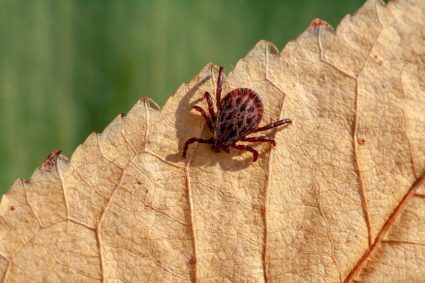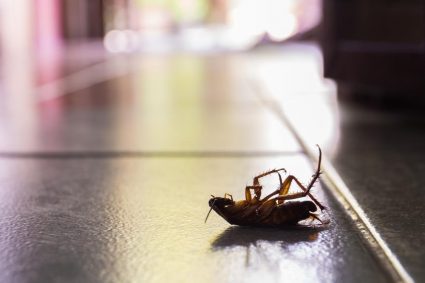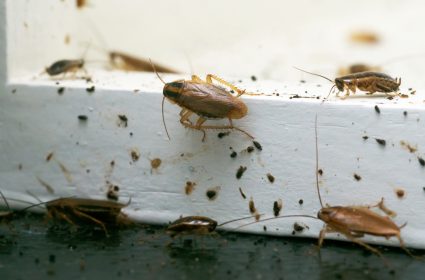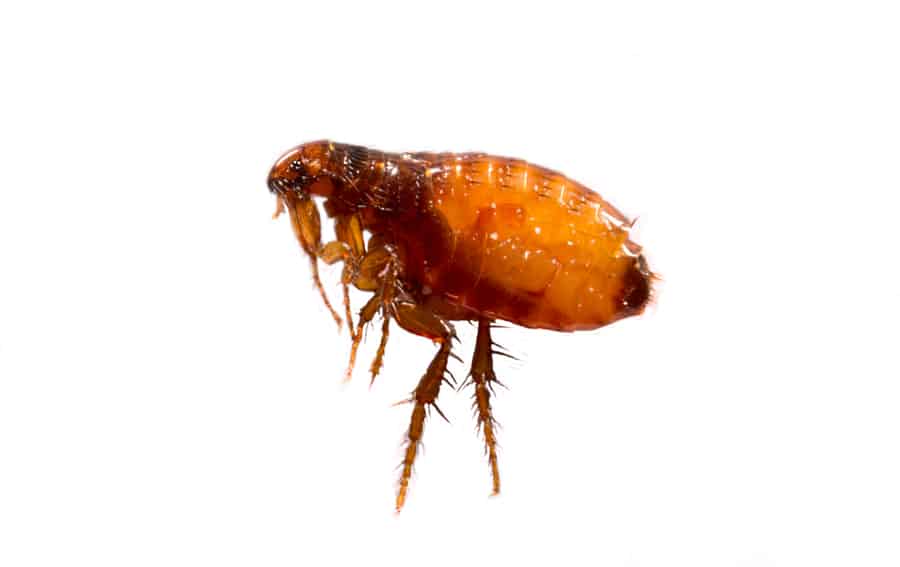
Bed bugs and fleas are some of the typical pests you can find in your house.
And they can be a nuisance, biting anyone if they have the chance.
So, if you have these pests in your lovely home, you may wonder what kills fleas and bed bugs.
And you’ll be pleased to know that killing bed bugs and fleas have the same methods.
So in this article, you will learn what you can do to eliminate bed bugs and fleas in your home.
Nobody likes to have fleas and bed bugs in their home. And they have a nasty bite, which can be irritating.
So, if you have such problems, you can kill them with the following:
- Heat
- Cold
- Traps
- Chemicals
If you have fleas and bed bugs in your home, the methods below should help you kill them:
5 Ways To Kill Fleas and Bed Bugs
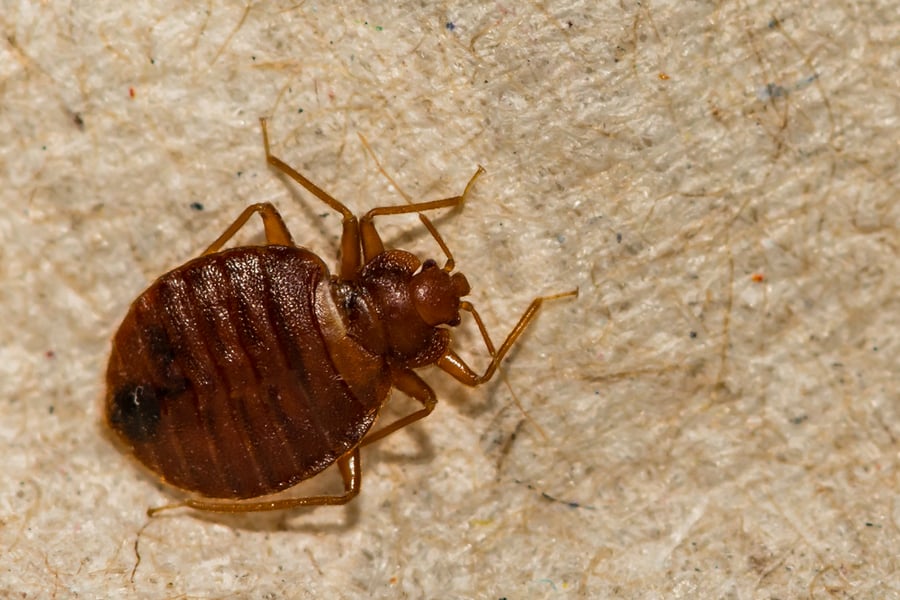
Getting fleas and bed bugs in your home can be a hassle, especially if you have no idea to eliminate them.
They can also pose health risks that can harm you and your family.
So, below are five ways to kill fleas and bed bugs:
1. Heat

If you have fleas and bed bugs in your fabric, the best solution is to kill them with heat by laundering them in hot water.
Bed bugs can die when their body temperature reaches over 45° Celsius or 113° Fahrenheit. The same goes for fleas, which can die when temperatures reach 40° Celsius or 104° Fahrenheit.
But if you want to kill these as fast as possible. You can turn up the heat to 60° Celsius (140° Fahrenheit). At this temperature, all pests will die rapidly.
“Will heating my room produce the same results?”
Unfortunately, heating your room will not get the same results because the temperatures needed are too high. And the infestation can spread further because fleas and bed bugs seek out cooler areas to escape the heat.
2. Cold

If you don’t want to turn up the heat, turn it down. But you will need to use very low temperatures.
Bed bugs, for example, need -18°C (0°F) for at least four days to penetrate and object eliminate all the pests and eggs.
The same goes for fleas, which can survive temperatures up to 7.2°C (45°F). And can live consistently below-freezing temperatures for up to five days.
So, can you use home freezers to kill these pests? The EPA doesn’t think so because it cannot be cold enough to kill fleas and bed bugs. And will take longer to eliminate.
Gas system instant freezers are also not a good option because they blow away the pests and spread the infestation more.
And turning the heating off your room will not also be effective. But if you leave the pests inside, they could die because of a lack of sustenance. However, they might migrate to other areas.
3. Traps

You could also use traps to kill fleas and bed bugs.
If your bed has legs, you can surround it with a sticky moat. So bed bugs get stuck and die when they try to leave your bed.
You can buy flea traps in stores, which use light to lure fleas to a sticky moat.
Traps can be an effective way to kill fleas and bed bugs. But depending on the situation, it can take a few days or months to eliminate an infestation.
4. Chemicals for Home Use

You can buy chemicals online or in a hardware store to kill fleas and bed bugs.
But remember, these can be hazardous, especially indoors. So it’s essential to follow procedures and only use approved products.
Some of the products you can buy are:
- Biochemicals, like neem oil
- Insect growth regulators
- Pyrethrins and pyrethroids
- Neonicotinoids
- Pyrroles
- Desiccants
You’ll find more details below about these chemicals.
Before you buy a chemical product, you should:
- Check for the EPA label
- Make sure the product mentions fleas and bed bugs
It is essential to follow the product instructions when you use them. So they can make full contact with the pests in your home. But some products may not be as effective as others.
For example, bug bombs or total release foggers cannot reach the cracks where the bed bugs and fleas hide. Plus, they can be dangerous to your health. They can also explode.
5. Pest Control

Publicly available pesticides are sometimes not that effective. Or may not reach the pest’s hiding area. If you are having trouble with this, it would be best to call on the experts and see how they can help you.
Typically, pest control services will work first with no-chemical products when eliminating an infestation. But if that does not work, then they’ll switch to chemicals.
And some chemicals only licensed professionals can use.
Pest controls professionals can:
- Determine the infestation
- Inspects areas affected by the infestation
- Combine non-chemical control and insecticide to get desired results
- Review the effectiveness of the treatment
- Add recommendations and preventive measures to measures to your property
Chemicals for Pest Controls

There are plenty of chemicals to kill fleas and bed bugs. Some of them are:
- Pyrethrins and Pyrethroids: These chemicals are typical pesticides against fleas and bed bugs. Pyrethrins are natural since it is derived from chrysanthemum flowers, while pyrethroids are the synthetic version. They attack the nervous systems of bugs. Unfortunately, some bed bug populations and fleas (specifically the Cat Flea) have become resistant to these products, especially older-generation ones.
- Silicates: These are desiccants. And examples include diatomaceous earth dust (DED). It can kill bed bugs through dehydration, destroying the wax covering such pests. Since the effects are neurochemical but physical, fleas and bed bugs cannot form any resistance.
- Insect Growth Regulators (IGRs): Examples of these products are hydroplane and (S)-methoprene, and they make fleas and bugs infertile. But insects need to bite for blood before chemicals kick in.
- Carbamates: These products are more effective than pyrethrins and pyrethroids. But there have been cases of insecticide resistance emerging. Some examples include bendiocarb and propoxur.
- Neonicotinoids: These are very effective products since fleas and bed bugs have no reported resistance. Plus, it does not have any residual effects. An example of this product is imidacloprid.
- Pyrroles: This is a slow-acting chemical but fortunately, no resistance has been reported. Chlorfenapyr is the only pyrrole-based product approved in the US.
Most people think that pyrethrins and pyrethroids are not effective anymore against modern strains of bed bugs and fleas.
Beddings and fabrics that advertise themselves as having been impregnated with these chemicals most likely cannot repel such pests anymore.
On the other hand, desiccants such as DEDs are always a good option for bed bugs and fleas. They have several advantages over others, including:
- Low possibility of insecticide resistance
- Longer shelf life
- You can use them as preventive measures
- Low residual life
- Low toxicity to mammals
Conclusion
Fleas and bed bugs are typical pests you can encounter in your home.
They can be a real nuisance, and fleas can be vectors for some diseases.
So if you have an infestation in your home, it’s essential to know what kills fleas and bed bugs.
Some options are heat, cold, pest control, and traps. But if it’s too much for you, the best option is to call for an exterminator.
Frequently Asked Questions
What Is the Difference Between Fleas and Bed Bugs?
Fleas are tiny blood-sucking parasites that jump to get around. Five percent of the entire flea population in your area lives on pets, which is how humans get flea bites. They’ll begin biting the moment they latch on to their host.
Bed bugs also feed on blood. They are small, oval-shaped, and reddish-brown. It’s hard to spot them during the day because they hide in dark places. And will only come out at night to bite people when they sleep. Unlike fleas, they need to crawl to where they need to be.
How Do I Know if I Have a Flea or Bed Bug Bite?
Flea bites cause intense and small red marks on your skin. And bite marks will sometimes appear in threes.
Typical bite areas are:
- Waist
- Armpits
- Ankles
- Feet and lower legs
- Elbows and knees (in the bend)
- Other skin folds
Bed bug bites appear on the upper half of your body, like the:
- Arms
- Neck
- Face
- Hands
Bite marks have a dark red spot in the middle and are small. They appear in clusters or a line and will get worse if you scratch them.
What’s the Best Way To Eliminate Bed Bugs and Fleas?
The best way to eliminate fleas and bed bugs is through desiccants like DEDs. Insects have difficulty resisting the product, last longer, and can be used for preventive measures.


